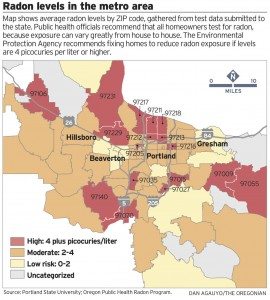It’s that time again! I imagine you’ll be doing some spring cleaning and yard work when the weather gets nice again. It’s a good idea to also do some basic maintenance around your house to save money, energy and possibly headaches later. If you maintain the systems in your home, you will have less of a chance of an expensive catastrophe and your appliances and house components will last longer, saving you money in the long run. Here are my recommendations for spring house maintenance:
Clean or replace your HVAC filters. This needs to be done regularly- I recommend doing it monthly when in use. A clean filter saves on energy costs and extends the life of your system. A dirty filter forces your system to work harder (reducing the life) to force air through all the built-up dirty particles and can re-distribute pollens and dirt throughout your home. Do you have allergies? This is a MUST!
Vacuum your refrigerator coils. Dirty coils (on the back of your fridge) cause your fridge to work harder to extract heat from the interior of the fridge which means more money out of your pocket! Use a vacuum cleaner hose or a brush to clean the coils.
Replace the batteries in your smoke detectors. This is probably the easiest but most often skipped home maintenance task. Having these in working order is important for safety of you and your family so don’t skip it! for added safety, get a carbon monoxide detector for each level of your home and each bedroom as well- safety first!
Clean your dryer vent. This also saves energy and money- when your vents are dirty, the exhaust air from your dryer doesn’t have a clear path to the exterior, so it has to work harder which causes inefficiency as you may have to run your dryer for longer periods of time. This means higher energy bills. Built-up lint is also a fire hazard. Be sure to also clean your lint trap inside the dryer before EVERY cycle!
Clean and inspect the gutters. I know I recommended this in the fall too, but dust, pollen, leaves and branches fall year-round and spring is the second most important time to clean them. Evaluate the overall condition of the gutters- be sure there are no leaks and that the drainage is away from the foundation. Use a gutter scoop to clear gutters and be sure the connections to downspouts is also clear. A friend of mine said he found a tennis ball in his gutter- no wonder it wasn’t draining properly!
Clear space around your AC compressor. Prepare for the warmer weather by clearing anything that can block airflow- this increases efficiency and extends the life of your unit.
Prepare your lawn mower. Sharpen the cutting blade and change the engine oil. Your mower will run like a champ and your lawn will look better too.
Happy spring!
